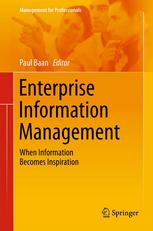

Most ebook files are in PDF format, so you can easily read them using various software such as Foxit Reader or directly on the Google Chrome browser.
Some ebook files are released by publishers in other formats such as .awz, .mobi, .epub, .fb2, etc. You may need to install specific software to read these formats on mobile/PC, such as Calibre.
Please read the tutorial at this link: https://ebookbell.com/faq
We offer FREE conversion to the popular formats you request; however, this may take some time. Therefore, right after payment, please email us, and we will try to provide the service as quickly as possible.
For some exceptional file formats or broken links (if any), please refrain from opening any disputes. Instead, email us first, and we will try to assist within a maximum of 6 hours.
EbookBell Team

4.4
62 reviewsHow an organization manages its information is arguably the most important skill in today’s dynamic and hyper-competitive environment. In Enterprise Information Management, editor Paul Baan and a team of expert contributors present a holistic approach to EIM, with an emphasis on action-oriented decision making. The authors demonstrate that EIM must be promoted from the top down, in order to ensure that the entire organization is committed to establishing and supporting the systems and processes designed to capture, store, analyze, and disseminate information. They identify three key “pillars” of applications: (1) business intelligence (the information and knowledge management process itself); (2) enterprise content management (company-wide management of unstructured information, including document management, digital asset management, records management, and web content management); and (3) enterprise search (using electronic tools to retrieve information from databases, file systems, and legacy systems).
The authors explore EIM from economic and socio-psychological perspectives, considering the “ROI” (return on information) of IT and related technological investments, and the cultural and behavioral aspects through which people and machines interact. Illustrating concepts through case examples, the authors provide a variety of tools for managers to assess and improve the effectiveness of their EIM infrastructure, considering its implications for customer and client relations, process and system improvements, product and service innovations, and financial performance.